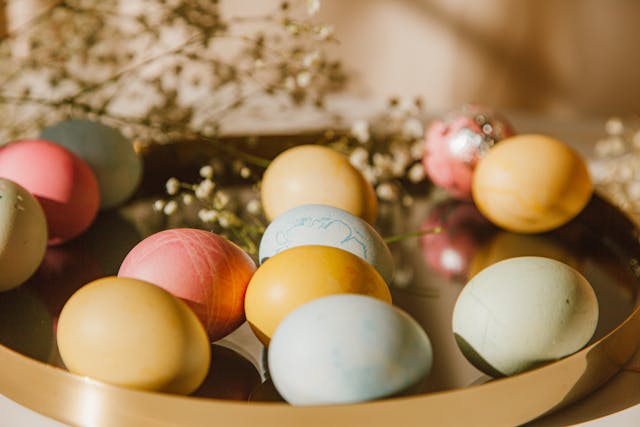Lavender Orpingtons lay light to medium brown eggs, often with warm tones, here’s everything to know about their egg color.
Lavender Orppington is a kind of chickens who feel they went straight out of a story. With their soft gray-slide plumage and gentle personality, they are often shostoper of any flock. But beyond his appearance, a question is asked more than anything else: what color eggs do Lavender Orpingtons lay?
The short answer is “light to medium brown”. But the long answer, what it looks like, why it varies, and what it means to you as a protector is far more interesting. This is what we want to unpack here.
What You'll Discover:
The Color of the Egg Means More Than the Color of the Egg
If you raise chickens for eggs, color is not just a curiosity. This is how the buyer’s expectations, the flock plan and even how to market your eggs. Some people like to mix a carton with blues, greens, chocolate and tan, it is almost like a food bouquet. For these reasons, knowing what can expect from lavender oroppington, protecting you from confusion or despair.
Lavender Orpington as Reference
Before we go deep into the eggshells, let’s keep the bird when it comes to it. The lavender is a modern color version of the Oppington Classic Orppington Breed. They are heavy, fluffy, quiet and famous. They are not early or the most powerful layers as soon as possible, but they balance egg production with form and nature.
You can expect them to lay around 150-200 eggs per year, which is respectably given their inheritance for double purposes.
And then of course it is plumage: the smokey lavender color that makes them the “model” on the chicken farm. It is easy to assume that their eggs will somehow match aesthetics, maybe blue or gray. But that’s not how genetics work.
Egg Color: Right North First
Lavender Arppington Hanes throws light from medium brown eggs. The shed is usually warm, which is sometimes called golden brown or body. They do not produce blue, green or chocolate-dark eggs. The color is more subtle, the inheritance tool is a natural fit for their traditional background as birds.
Microvariations in the Color of Their Eggs
Now, while “Light to Medium Brown” is the official answer, the keepers often notice the subtle difference:
- Pink glow: Some eggs can appear for a weak pink hue, especially when fresh.
- Peach undertone: Sometimes it bends brown to the heat, especially when the shells are thin.
- Seasonal change: Eggs placed in winter sometimes solve slightly compared to summer eggs.
These variations do not change the area, they are still brown eggs, but they provide personality to each chicken output.
Why Lavender Plumage Does Not Mean Lavender Eggs
People here are often confused. The color of lavender feather comes from a genetic dilution factor called “low jean”. It changes how feather pigments are expressed to create a smokey lavender effect, dilute black and red.
But the color of the egg shells comes from a very own set of genes and pigments, mainly protopurfirine for brown shells. This means that peat genes and eggs pebbles do not talk to each other.
So no matter how much the plumage looks, their egg color is attached to the same warm brown family as the other arppington is located.
Comparing Lavender Orpington Eggs with Other Orpingtons
To really get the picture, it helps to compare:
- Buff Orpington: Usually medium brown eggs, often slightly richer than lavenders.
- Black Orpington: Known for medium brown eggs, sometimes darker than buff.
- White Orpington: Eggs are often the largest, at the light end of the brown spectrum.
- Lavender Orpington: In the middle—lighter than buff, darker than white, but generally brown.
This comparison suggests that when Lavender brings new wings to the table, their eggs are very high in the traditional outbreak area.
Egg-Colored Factors
Although the genetic base determines the baseline, the exact shade of brown may vary depending on many factors:
- Age of hen: Young chickens lay lighter eggs; with maturity, pigment becomes more consistent.
- Diet: Minerals and nutrients in feed affect shell quality and color depth.
- Stress level: Heat waves, predators, or housing changes can cause lighter eggs.
- Seasonal changes: Shorter daylight in winter often results in paler eggs.
So if you see a change in the egg palette of your flock, there is often a clue about something happening in their lives.
Real Life Comments from Keepers
Chicken holders often note that lavender that is eggs feels “soft” in the shade compared to breeds like Maran or Wellsmers, which adds dark chocolate eggs.
Some describe them as “large brown eggs, sometimes with pink tones”. Others say that Lavender’s eggs look like buff Orpington, just a haircut.
This is where the reality and the perception receive: lighting, collection time and even the eggs in the surrounding flocks shape how to see color.
Egg Quality and Color Maximization
If you want the richest brown that is possible from your lavender Openington, you need to take into account their care:
- Balanced nutrition with calcium and minerals supports shell thickness and pigment deposit.
- Consistent lighting in winter ensures more stable color.
- Low stress environment means better, stronger-colored eggs.
- Hydration and climate care matter, since their heavy plumage makes them heat-sensitive.
Common Misunderstandings About Lavender Orpington Eggs
- They lay lavender-colored eggs → False. Plumage genes don’t affect shell pigment.
- They continuously produce pink eggs → False. Pink is just a reflection effect.
- Crossing them guarantees unique egg colors → False. Still brown unless crossed with blue/green egg gene breeds.
Frequently Asked Questions
When does Lavender Arppington start to lay?
Usually about six months, sometimes later.
How many eggs per year?
About 150-200.
Are eggs big?
Medium, sometimes medium-large.
Are they good winter layers?
Not the best, but can continue with proper light and nutrition.
Key Takings
- Lavender Arpington shed light up to medium brown eggs, often warm in tone.
- A pink or peach color may appear in some eggs, but it is subtle and not guaranteed.
- Feather color genetics have nothing to do with eggshell color.
- Egg color can shift with age, diet, stress, and weather.
- They lay around 150-200 medium eggs per year.
- Compared to other Orpingtons, their egg color is right in the middle range.
Additional Resources:
- Guide to Chicken Egg Colors: Explains the science behind shell pigments and why different breeds produce different shades.
- Orpington Breed Overview: A broader history of the Orpington breed, including characteristics, productivity, and heritage value.





